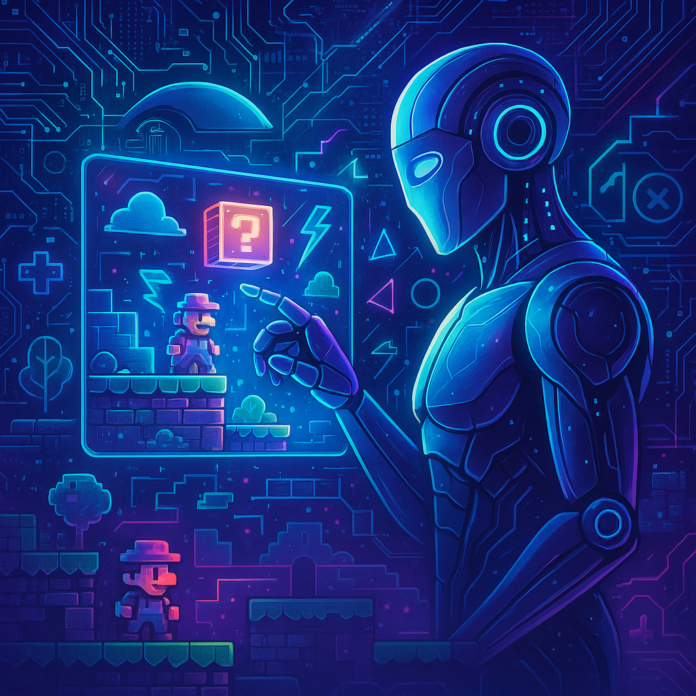How AI is Shaping the Future of Game Development? Artificial intelligence is no longer just a futuristic concept—it has become a vital force powering the transformation of the game development process. From generating visually stunning assets to dynamically crafting immersive narratives, AI technologies are now at the forefront of innovation in the gaming industry. In this article, we explore how AI is reshaping every facet of game development, driving efficiency, creativity, and transformative gameplay.
AI in Game Art and Asset Creation
Revolutionizing Visual Design
Traditionally, creating high-quality art assets required large teams of artists and designers. Today, AI-based image generators and neural networks are automating parts of the creative process. Tools like DALL-E and Midjourney empower developers to rapidly generate concept art, textures, and even character designs with minimal human intervention. This not only speeds up production cycles but also allows teams to experiment with diverse aesthetics and styles.
- Key Benefits:
- Faster Asset Production: AI algorithms generate multiple art variations quickly.
- Enhanced Creativity: Designers can iterate on unique artistic concepts without starting from scratch.
- Cost Efficiency: Smaller teams can achieve professional-quality assets with reduced overhead.
Procedural Generation and Dynamic World Building
Creating Vast and Immersive Game Worlds
AI is at the heart of procedural content generation, a technique that creates game worlds, levels, and environments algorithmically. Advanced AI-driven systems analyze gameplay data and player behavior to dynamically adjust level design, enemy placement, and resource distribution. This leads to more personalized experiences where no two playthroughs are exactly alike.
- Implementation Examples:
- Narrative Generation: AI-powered systems like GPT-4 assist in writing branching dialogues and generating lore-rich story elements.
- Level Design: Algorithms can generate maze-like dungeons or sprawling landscapes that evolve with the player’s progress.
Enhancing NPC Behavior and Game Mechanics
Smarter, More Responsive Characters
Non-player characters (NPCs) now exhibit more realistic and adaptive behaviors, thanks to sophisticated AI models. Developers are using machine learning techniques to enable NPCs to learn from player interactions and adjust their actions in real time. This revolutionizes gameplay by making the game world feel alive and responsive.
- How It Works:
- Adaptive AI: NPCs modify strategies based on user choices, offering a true “living” game world.
- Player Interaction: Enhanced dialogue systems powered by AI allow NPCs to offer unique, context-sensitive responses.
Streamlining Quality Assurance and Testing
Automated Debugging and Player Behavior Simulation
Game testing is a critical, yet time-consuming, part of development. AI solutions are now being leveraged to simulate countless gameplay scenarios, detect bugs, and optimize game balance. This reduces the risk of costly post-launch patches and improves the overall player experience.
- Testing Improvements:
- Automated Test Suites: AI bots can mimic player behavior to stress-test game mechanics and identify errors.
- Predictive Analytics: Machine learning models analyze gameplay data to predict potential bottlenecks or exploit issues before launch.
These advancements lead to more robust software, faster release cycles, and ultimately a smoother gaming experience.
The Impact on Game Narrative and Design Innovation
Unlocking New Creative Possibilities
By freeing up human resources from routine tasks, AI allows developers to focus more on creative storytelling and innovative design. This shift is enabling indie studios and larger development teams alike to push the boundaries of what games can achieve. Creators can experiment with non-linear narratives, dynamic story responses, and even incorporate player-generated content into the game world.
- Creative Focus:
- Expansive Storytelling: Deep, reactive narratives that adapt to every player decision.
- User-Generated Experiences: Platforms are emerging that use AI to blend developer content with community creations.
The result is a more immersive and personalized experience for players, often blurring the lines between game and art.
Challenges and Future Prospects
Navigating Ethical and Technical Hurdles
While AI provides numerous advantages, its integration into game development is not without challenges. Issues such as data bias, ethical concerns over automated content, and the need for fine-tuning AI outputs to match human creativity remain at the forefront of industry discussions.
- Technical Constraints: AI-generated content sometimes lacks the nuance required for complex narratives or high-fidelity graphics.
- Ethical Considerations: The transparency of AI decisions and ensuring diverse representations remain critical challenges.
Looking Ahead
Despite these hurdles, the potential of AI is immense. Future developments may include:
- Deeper Integration with Cloud Gaming: Allowing real-time AI adjustments based on networked multiplayer data.
- Personalized Game Experiences: AI will enable hyper-personalized content that adapts to individual player preferences and gaming habits.
- Enhanced Collaborative Tools: Platforms where human creativity and AI capabilities merge seamlessly, fostering innovative game design.
Do you want to known about (Top 10 Open World Games of 2025 Must Play Adventures)

